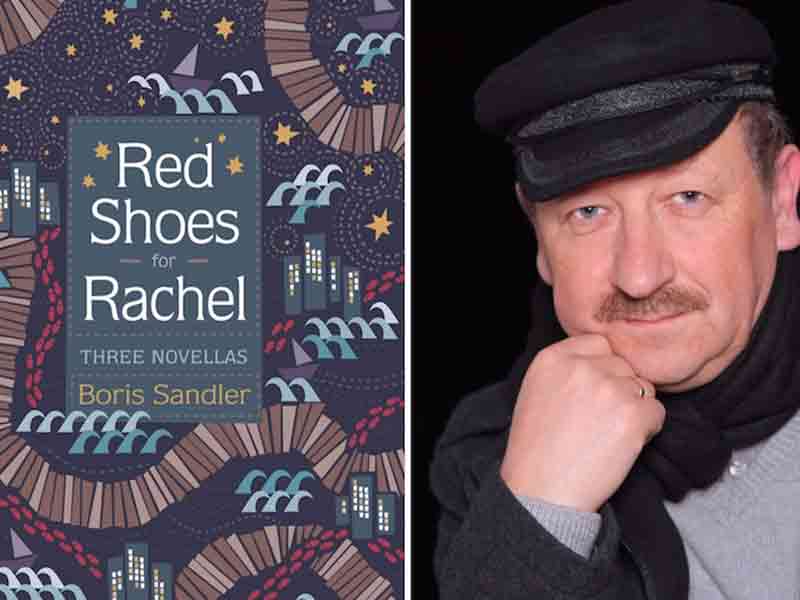When I read Boris Sandler’s story, Studies in Solfege, in Have I Got a Story for You, Ezra Glinter’s anthology of short Yiddish stories translated into English, I wondered if any of Sandler’s other works of fiction had been translated into English. To my delight, I learned that not only was Sandler still alive, unlike so many other Yiddish authors, he was set to release a new book, Red Shoes for Rachel (Syracuse University Press).
In Red Shoes for Rachel, we meet Sandler’s fellow Jews from Bessarabia. During the Second World War, the Jews there suffered under the Germans and the pro-German Rumanian fascists. Soon after being liberated by the Red Army, they fell under the rule of the Soviet dictatorship. In the three novellas that make up the book, we meet perceptively drawn men, women and children, as they live their bumpy lives in the Soviet Union, Israel and in the “goldeneh medineh” (the golden land) of Brooklyn, N.Y., more specifically, Brighton Beach.
Sandler’s style, unlike that of most other writers in the Yiddish literary canon – almost all of whom write in the late 19th- and early-20th century realistic style – hovers between realism and magic realism (think of writers like Jorge Luis Borges, Italo Calvino and Vargas Llosa) – with surprising effect. The author skillfully shifts between times, as his characters recall years past, while experiencing the present. Arching over this are believable, vibrant human beings who are vivified through description, dialogue and interior monologue.
From the first line of the novella, Karolina-Bugaz – “Bella woke from sleep as if she had been driven out of it” – one sees at once a writer who uses words with verve and imagination. On the 30th anniversary of her marriage, Bella goes to a bakery to pick up a special cake she ordered. But she comes home to find a note saying that her husband, Mark, has left her. He went on a cruise, alone, and on an island near where the ship docked, he meets a young woman who has the same name as his wife.
With realism, the reader knows where he is, and which character is breathing in his presence. In magic realism, the borders between what’s real and what’s make-believe are blurred and the reader is never totally sure. Reality in such fiction is a slippery slope.
In the beginning of the novella, Halfway Down the Road Back to You, we are introduced to an old lady in Israel who’s preparing dozens of slices of dried white bread, which are scattered all over her apartment. She considers this an obligatory present when visiting.
At age 80, she had spent 73 of her years in Beltsy, Bessarabia. For the past seven years, she has lived in a small apartment in Nazareth, where there is a windowless security room stocked with food, “just in case.” Both her children are abroad and there is no indication she has any friends, except for a twice-a-week aide.
Through her memories, we relive her days in the Romanian ghetto during the Second World War, where she risked being shot by slipping out once in a while to beg for food for her family. It is only toward the end of the tale that we suspect – but are not really sure (this is, after all, magic realism) – that she might be bringing all those crusts she has prepared into that security room.
Red Shoes for Rachel is one of the most beautiful and moving stories of middle-aged love I’ve ever read. Rachel, the only American-born protagonist in this collection, lives near the Coney Island boardwalk and selflessly tends to her disabled, wheelchair-bound mother. One day, when she bumps into Yasha, a divorced immigrant from Moldavia, her life turns around. In separate chapters, we learn of Yasha’s experiences during the Holocaust, as well as those of Rachel’s parents. In the end, the two lonely souls form an indelible bond.
STUDENT BODIES REUNITES 20 YEARS LATER – AND PEOPLE SEEM TO CARE
In translations of Yiddish literature, there is sometimes a wide gap between knowledge of Yiddish and knowledge of Yiddishkeit (Judaism), with errors regarding some obvious points in the latter, and this book is no exception. One story depicts “a Sabbath lunch with songs and putting on of phylacteries” (tfillin), which is done during morning prayers on weekdays and certainly not during lunch. Another includes a mistranslation of the phrase, “borukh HaShem,” which does not mean, “blessed be His name,” but rather, “blessed be God,” or, more actually, “thank God.” Elsewhere, a woman “blesses the Sabbath candles.” But only Christians bless objects like rosaries, medals and candles. Jewish women recite a blessing to God over the candles.
This aside, Barnet Zumoff’s translation is splendid, natural and effortless. It meets the gold standard of translation – when reading this book, one assumes it was written in English.
Read Red Shoes for Rachel and you will discover a superb storyteller and a modern master of prose.
Among Curt Leviant’s critically acclaimed novels, the most recent are King of Yiddish and Kafka’s Son.
